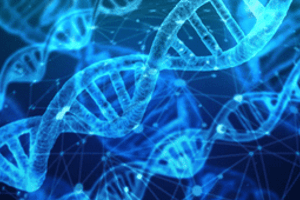Podcast
Questions and Answers
What is the primary focus of Molecular Genetic Techniques Part I and II?
What is the primary focus of Molecular Genetic Techniques Part I and II?
- Protein detection and purification
- Analysis of Gene Expression
- Nucleic Acid Detection Techniques
- DNA Cloning (correct)
What is the function of recombinant DNA technology?
What is the function of recombinant DNA technology?
- Nucleases hydrolyze an ester bond within a phosphodiester bond
- Replication of recombinant DNA within host cells
- Preparation of large numbers of identical DNA molecules (correct)
- Isolation, sequencing and manipulation of purified DNA fragment
What is the definition of recombinant DNA?
What is the definition of recombinant DNA?
- A DNA molecule composed of only protein sequences
- A DNA molecule composed of sequences derived from the same source
- A DNA molecule composed of RNA sequences
- Any DNA molecule composed of sequences derived from different sources (correct)
What is the main function of nucleases in molecular genetics?
What is the main function of nucleases in molecular genetics?
What does DNA Cloning involve?
What does DNA Cloning involve?
Flashcards are hidden until you start studying
Study Notes
Molecular Genetic Techniques
- Primary focus of Molecular Genetic Techniques Part I and II: analyzing and manipulating genetic material at the molecular level
Recombinant DNA Technology
- Function: enables the creation of new DNA molecules by combining different DNA sequences from different sources
- Allows for the introduction of desired traits into organisms, gene expression, and protein production
Recombinant DNA
- Definition: a form of DNA that is created by combining genetic material from different sources, such as different organisms
Nucleases in Molecular Genetics
- Main function: to cut DNA molecules at specific recognition sites, facilitating the manipulation of genetic material
DNA Cloning
- Involves: creating multiple copies of a DNA segment, typically using a vector (e.g. plasmid) to replicate the desired DNA sequence in a host organism
Studying That Suits You
Use AI to generate personalized quizzes and flashcards to suit your learning preferences.




